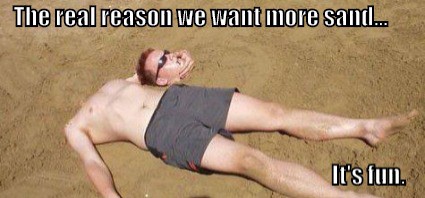According to the San Diego Union-Tribune A 50-year sand-replenishment project that would widen the beaches in Solana Beach and Encinitas by a total of 35 acres. More importantly, this project should add years of life to North County beaches. A previous article on the sand replenishment project.
The Good News
The U.S. Army Corps of Engineers would oversee the sand replenishment.
The sand would be dredged from three offshore sites and deposited on beaches beginning in about two years. It would be replenished every five to 10 years for the life of the project, adding 150 feet to Solana Beach and 50 feet to your favorite beaches in Encinitas.
With the threat of future El Nino‘s, this project would create a buffer of sand to protect bluffs from wave erosion.
The Really Good News For Del Mar? Blacks Beach?
Due to currents of the Pacific Ocean, sand moves. On our North County beaches sand ‘flows’ southerly. Could be great news for Del Mar and all the way to Blacks Beach. They essentially get free sand.
The Bad News
Opponents state offshore dredging work might harm marine life.
The San Diego Reader quotes retired marine biologist Dennis Lees stating: “Studies conclude that ‘Beach replenishment is futile,’ he said. ‘Beach replenishment is the opposite of how the situation should be addressed.’ His greatest concern has to do with the 20-foot deep basins on the ocean and lagoon floors created by taking sand — toxic dead zones are created from the sand removal, he testified. ‘The bottoms become anaerobic,’ Lees said. “Pismo clams and lobsters disappeared after the last SANDAG project.”
Other opponents say this project is really just protecting the property of million-dollar, bluff-top properties.

The Really Bad News?
Surfing Tabletops
Some surfers believe all the extra sand will change their favorite surf breaks. The Surfrider Foundation fears the most change for Tabletops reef break.
Tabletops Solana Beach – Surfer Interviews
Tabletops Solana Beach – Surfer Interviews from Surfrider Foundation San Diego C on Vimeo.
Calit2 Bluff Erosion Project

